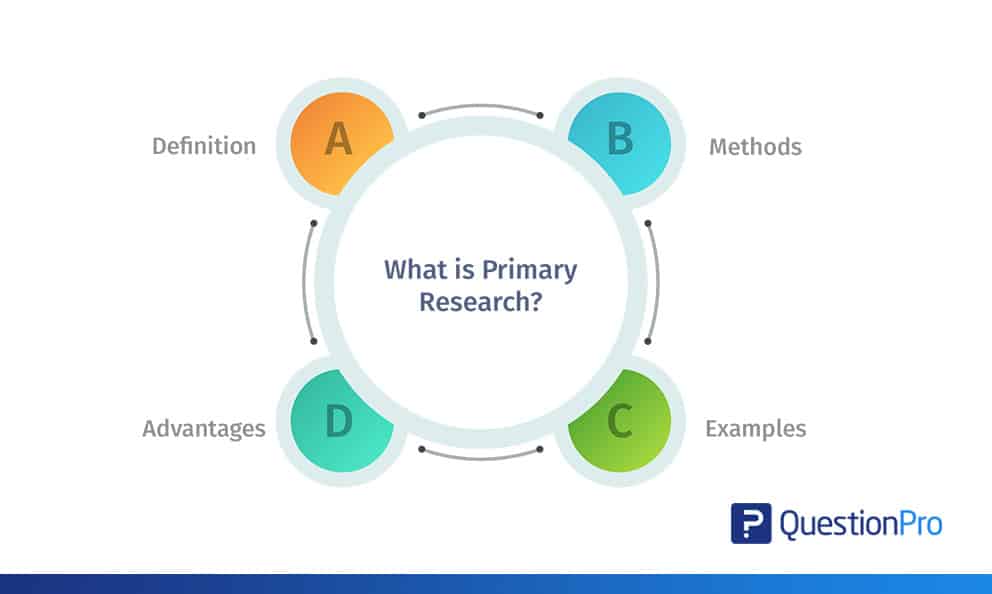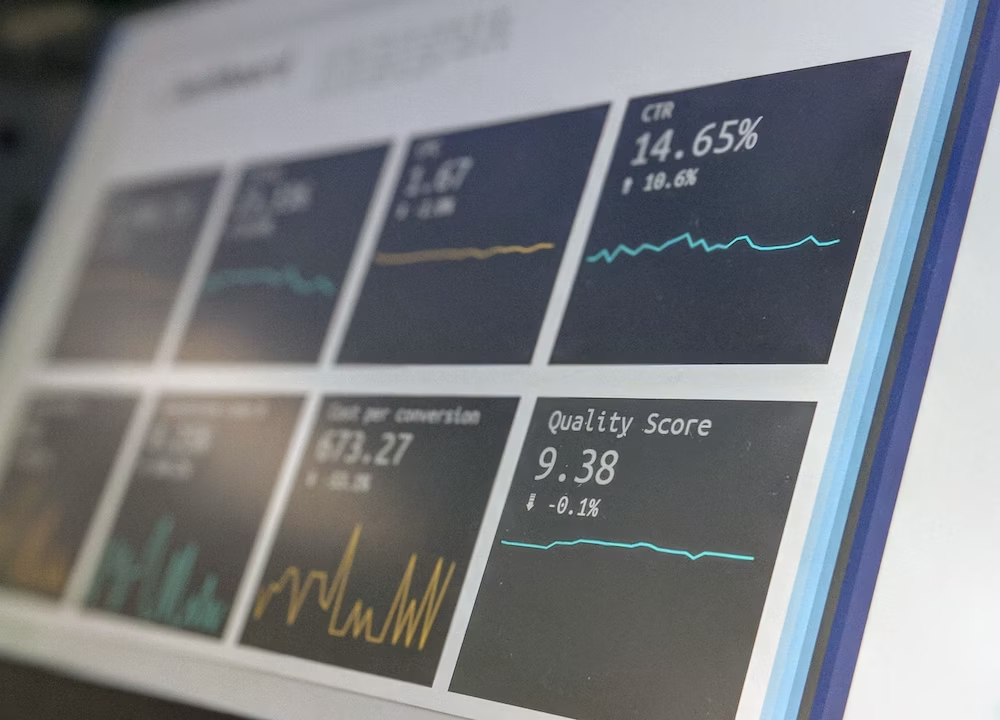- How it works

"Christmas Offer"
Terms & conditions.
As the Christmas season is upon us, we find ourselves reflecting on the past year and those who we have helped to shape their future. It’s been quite a year for us all! The end of the year brings no greater joy than the opportunity to express to you Christmas greetings and good wishes.
At this special time of year, Research Prospect brings joyful discount of 10% on all its services. May your Christmas and New Year be filled with joy.
We are looking back with appreciation for your loyalty and looking forward to moving into the New Year together.
"Claim this offer"
In unfamiliar and hard times, we have stuck by you. This Christmas, Research Prospect brings you all the joy with exciting discount of 10% on all its services.
Offer valid till 5-1-2024
We love being your partner in success. We know you have been working hard lately, take a break this holiday season to spend time with your loved ones while we make sure you succeed in your academics
Discount code: RP0996Y

Primary Research Explained | Definition, Types & Examples
Published by Alvin Nicolas at October 16th, 2024 , Revised On October 24, 2024
While conducting research on any particular topic, subject or phenomenon, we gather information and data. Most of the data gathered already exists, which facilitates us in our work. However, the research that is carried out first-hand is known as primary research. Simply put, primary research is carried out by scholars and researchers to gain new information.
In this article, we shall develop an understanding of what a primary research study is, the importance of primary sources in research , the methodologies used in it and why it is useful in both qualitative and quantitative research .
What Is Primary Research Definition?
Primary research, also known as original research, is the act of gathering fresh data and information for the sake of producing new knowledge and insights. When doing this research, individuals do not rely on available databases, articles and research papers.
Many business, marketing and health companies conduct primary research to make informed decisions, as the data gathered first-hand is highly meaningful and accurate. This type of research is carried out in qualitative research, in the form of surveys, questionnaires and focus groups. Quantitative primary research does exist but is not common.
When To Use Primary Research?
There are two types of research . Unlike secondary research, which deals with existing research, primary research is used when a researcher needs original and up-to-date information on a specific topic. It is also a means to answer a new research question that has been sought by a research scholar.
Limited research or inadequate data on any subject also leads to the collection of new information, which is where primary research comes in handy. Not only can primary research strengthen secondary research but also helps identify new patterns and behaviours that were previously not apparent, addressing any gaps.
Methods Of Primary Research
Primary research can be carried out in many ways, but should always be done according to the principles of scientific methods. Here are some methods used in primary research by researchers, students and organisations:
Surveys/Questionnaires
This is a popular qualitative data collection approach that is used in primary research to gather information by both online and offline questionnaires. These questions tend to discover people’s opinions, behaviour and attitudes towards a particular topic and phenomenon. Questions can be both close-ended and open-ended, depending on the nature of the research.
It is important to understand how to conduct surveys and it is recommended that the surveys must not be lengthy as many individuals have limited attention spans, and can get bored. Moreover, each question must be comprehensive, error-free and not give way to observer bias.
This qualitative research method has been popular for ages, to gather key information and expand knowledge related to a subject. This method deals with one-on-one interviews with individuals to generate a better opinion as it gives detailed insights and expert opinions on the research question being examined. Moreover, interviews can be conducted face-to-face, on the telephone or online.
There are three main types of interviews conducted during research:
- Structured interviews
- Unstructured interviews
- Semi-structured interviews
Focus Groups
Focus groups are another qualitative method for collecting data from a group of people, usually between 6 and 10. All the participants, who have expert opinions on the subject, are asked a series of questions. A moderator facilitates this mode of discussion and oversees the whole process. Moreover, business markets carry out these methods to learn more about the attitudes and opinions of customers and clients.
Observations
This primary research method involves observing people, a phenomenon or variables that are under study. There is no direct interaction between the researcher and the person being observed, and the researcher makes notes of the observations he makes. These observations can be carried out by a camera or a trained observer. It helps catch the genuine reactions of the subject.
Hire an Expert Researcher
Orders completed by our expert writers are
- Formally drafted in academic style
- 100% Plagiarism free & 100% Confidential
- Never resold
- Include unlimited free revisions
- Completed to match exact client requirements

Here are three types of observations used in research:
- Cohort studies
- Cross-sectional studies
- Case-control Studies
Advantages And Disadvantages Of Primary Research
Primary research is beneficial for a variety of purposes, however, it also has some disadvantages. Let’s understand the advantages of primary research and the disadvantages of primary research :
Difference Between Primary And Secondary Research
Primary and secondary research are two different methods of gathering information during research. Each has its definition, methodologies and characteristics. Here is how the two differ from each other:
Examples Of Primary Research
Here are some examples of primary research:
Example 1: Consumer Preference Survey
A skincare brand wants to introduce a new skincare product that heals acne scars. To understand consumer preference, they conduct an online survey targeting women and young girls, who are likely to face such skin issues.
The survey questions include demographic questions such as age and gender and consist of questions regarding skincare ingredient preferences, price range, and product packaging.
Example 2: Understanding Victim Psychology Through Interview
An interviewer wants to understand the experiences of victims for his podcast. He conducts a face-to-face interview with a victim of domestic violence. The interview consists of questions related to the victim’s domestic affairs, experiences and behaviours. Key focus areas include emotional responses to questions, coping mechanisms and certain psychological responses.
It is important to ensure that such interviews are conducted with the participant’s consent and with sensitivity and respect.
Frequently Asked Questions
What is the difference between surveys and questionnaires.
Questionnaires are a set of questions given to participants in a survey, however, surveys are a larger part of the study of a specific group that can include a variety of research methodologies and questionnaires to understand the subject under study.
What is data analysis?
Data analysis involves understanding different patterns within the data. It deals with the inspection of data for information and trends, and creating a set of results and conclusions from it.
How can bias occur in primary research?
Primary research bias occurs during the research process and skews the accuracy of findings. It may occur due to subjective interpretation of results, poor questionnaires and if the researcher of the study consciously or unconsciously projects their opinions on the research. Moreover, it can occur when the participants fail to recall their experiences or previous events that are necessary for data collection.
You May Also Like
A perfectly written research paper discussion section increases the study’s credibility, which is only possible by following the 5 steps.
The numerical information and data gathered by using statistical, computational and mathematical techniques is known as quantitative research.
Qualitative research uses surveys, interviews, observations, and case studies to gather and analyse data to create meaningful conclusions.
As Featured On

USEFUL LINKS
LEARNING RESOURCES

COMPANY DETAILS

Splash Sol LLC
- How It Works
- Skip to main content
- Skip to primary sidebar
- Skip to footer
- QuestionPro

- Solutions Industries Gaming Automotive Sports and events Education Government Travel & Hospitality Financial Services Healthcare Cannabis Technology Use Case AskWhy Communities Audience Contactless surveys Mobile LivePolls Member Experience GDPR Positive People Science 360 Feedback Surveys
- Resources Blog eBooks Survey Templates Case Studies Training Help center
Home Market Research
Primary Research: What It Is, Purpose & Methods + Examples

As we continue exploring the exciting research world, we’ll come across two primary and secondary data approaches. This article will focus on primary research – what it is, how it’s done, and why it’s essential.
We’ll discuss the methods used to gather first-hand data and examples of how it’s applied in various fields. Get ready to discover how this research can be used to solve research problems , answer questions, and drive innovation.
What is Primary Research: Definition
Primary research is a methodology researchers use to collect data directly rather than depending on data collected from previously done research. Technically, they “own” the data. Primary research is solely carried out to address a certain problem, which requires in-depth analysis .
There are two forms of research:
- Primary Research
- Secondary Research
Businesses or organizations can conduct primary research or employ a third party to conduct research. One major advantage of primary research is this type of research is “pinpointed.” Research only focuses on a specific issue or problem and on obtaining related solutions.
For example, a brand is about to launch a new mobile phone model and wants to research the looks and features they will soon introduce.
Organizations can select a qualified sample of respondents closely resembling the population and conduct primary research with them to know their opinions. Based on this research, the brand can now think of probable solutions to make necessary changes in the looks and features of the mobile phone.
Primary Research Methods with Examples
In this technology-driven world, meaningful data is more valuable than gold. Organizations or businesses need highly validated data to make informed decisions. This is the very reason why many companies are proactive in gathering their own data so that the authenticity of data is maintained and they get first-hand data without any alterations.
Here are some of the primary research methods organizations or businesses use to collect data:
1. Interviews (telephonic or face-to-face)
Conducting interviews is a qualitative research method to collect data and has been a popular method for ages. These interviews can be conducted in person (face-to-face) or over the telephone. Interviews are an open-ended method that involves dialogues or interaction between the interviewer (researcher) and the interviewee (respondent).
Conducting a face-to-face interview method is said to generate a better response from respondents as it is a more personal approach. However, the success of face-to-face interviews depends heavily on the researcher’s ability to ask questions and his/her experience related to conducting such interviews in the past. The types of questions that are used in this type of research are mostly open-ended questions . These questions help to gain in-depth insights into the opinions and perceptions of respondents.
Personal interviews usually last up to 30 minutes or even longer, depending on the subject of research. If a researcher is running short of time conducting telephonic interviews can also be helpful to collect data.
2. Online surveys
Once conducted with pen and paper, surveys have come a long way since then. Today, most researchers use online surveys to send to respondents to gather information from them. Online surveys are convenient and can be sent by email or can be filled out online. These can be accessed on handheld devices like smartphones, tablets, iPads, and similar devices.
Once a survey is deployed, a certain amount of stipulated time is given to respondents to answer survey questions and send them back to the researcher. In order to get maximum information from respondents, surveys should have a good mix of open-ended questions and close-ended questions . The survey should not be lengthy. Respondents lose interest and tend to leave it half-done.
It is a good practice to reward respondents for successfully filling out surveys for their time and efforts and valuable information. Most organizations or businesses usually give away gift cards from reputed brands that respondents can redeem later.
3. Focus groups
This popular research technique is used to collect data from a small group of people, usually restricted to 6-10. Focus group brings together people who are experts in the subject matter for which research is being conducted.
Focus group has a moderator who stimulates discussions among the members to get greater insights. Organizations and businesses can make use of this method, especially to identify niche markets to learn about a specific group of consumers.
4. Observations
In this primary research method, there is no direct interaction between the researcher and the person/consumer being observed. The researcher observes the reactions of a subject and makes notes.
Trained observers or cameras are used to record reactions. Observations are noted in a predetermined situation. For example, a bakery brand wants to know how people react to its new biscuits, observes notes on consumers’ first reactions, and evaluates collective data to draw inferences .
Primary Research vs Secondary Research – The Differences
Primary and secondary research are two distinct approaches to gathering information, each with its own characteristics and advantages.
While primary research involves conducting surveys to gather firsthand data from potential customers, secondary market research is utilized to analyze existing industry reports and competitor data, providing valuable context and benchmarks for the survey findings.
Find out more details about the differences:
1. Definition
- Primary Research: Involves the direct collection of original data specifically for the research project at hand. Examples include surveys, interviews, observations, and experiments.
- Secondary Research: Involves analyzing and interpreting existing data, literature, or information. This can include sources like books, articles, databases, and reports.
2. Data Source
- Primary Research: Data is collected directly from individuals, experiments, or observations.
- Secondary Research: Data is gathered from already existing sources.
3. Time and Cost
- Primary Research: Often time-consuming and can be costly due to the need for designing and implementing research instruments and collecting new data.
- Secondary Research: Generally more time and cost-effective, as it relies on readily available data.
4. Customization
- Primary Research: Provides tailored and specific information, allowing researchers to address unique research questions.
- Secondary Research: Offers information that is pre-existing and may not be as customized to the specific needs of the researcher.
- Primary Research: Researchers have control over the research process, including study design, data collection methods , and participant selection.
- Secondary Research: Limited control, as researchers rely on data collected by others.
6. Originality
- Primary Research: Generates original data that hasn’t been analyzed before.
- Secondary Research: Involves the analysis of data that has been previously collected and analyzed.
7. Relevance and Timeliness
- Primary Research: Often provides more up-to-date and relevant data or information.
- Secondary Research: This may involve data that is outdated, but it can still be valuable for historical context or broad trends.
Advantages of Primary Research
Primary research has several advantages over other research methods, making it an indispensable tool for anyone seeking to understand their target market, improve their products or services, and stay ahead of the competition. So let’s dive in and explore the many benefits of primary research.
- One of the most important advantages is data collected is first-hand and accurate. In other words, there is no dilution of data. Also, this research method can be customized to suit organizations’ or businesses’ personal requirements and needs .
- I t focuses mainly on the problem at hand, which means entire attention is directed to finding probable solutions to a pinpointed subject matter. Primary research allows researchers to go in-depth about a matter and study all foreseeable options.
- Data collected can be controlled. I T gives a means to control how data is collected and used. It’s up to the discretion of businesses or organizations who are collecting data how to best make use of data to get meaningful research insights.
- I t is a time-tested method, therefore, one can rely on the results that are obtained from conducting this type of research.
Disadvantages of Primary Research
While primary research is a powerful tool for gathering unique and firsthand data, it also has its limitations. As we explore the drawbacks, we’ll gain a deeper understanding of when primary research may not be the best option and how to work around its challenges.
- One of the major disadvantages of primary research is it can be quite expensive to conduct. One may be required to spend a huge sum of money depending on the setup or primary research method used. Not all businesses or organizations may be able to spend a considerable amount of money.
- This type of research can be time-consuming. Conducting interviews and sending and receiving online surveys can be quite an exhaustive process and require investing time and patience for the process to work. Moreover, evaluating results and applying the findings to improve a product or service will need additional time.
- Sometimes, just using one primary research method may not be enough. In such cases, the use of more than one method is required, and this might increase both the time required to conduct research and the cost associated with it.
Every research is conducted with a purpose. Primary research is conducted by organizations or businesses to stay informed of the ever-changing market conditions and consumer perception. Excellent customer satisfaction (CSAT) has become a key goal and objective of many organizations.
A customer-centric organization knows the importance of providing exceptional products and services to its customers to increase customer loyalty and decrease customer churn. Organizations collect data and analyze it by conducting primary research to draw highly evaluated results and conclusions. Using this information, organizations are able to make informed decisions based on real data-oriented insights.
QuestionPro is a comprehensive survey platform that can be used to conduct primary research. Users can create custom surveys and distribute them to their target audience , whether it be through email, social media, or a website.
QuestionPro also offers advanced features such as skip logic, branching, and data analysis tools, making collecting and analyzing data easier. With QuestionPro, you can gather valuable insights and make informed decisions based on the results of your primary research. Start today for free!
LEARN MORE FREE TRIAL
MORE LIKE THIS

Maximize Employee Feedback with QuestionPro Workforce’s Slack Integration
Nov 6, 2024

2024 Presidential Election Polls: Harris vs. Trump
Nov 5, 2024

Your First Question Should Be Anything But, “Is The Car Okay?” — Tuesday CX Thoughts

QuestionPro vs. Qualtrics: Who Offers the Best 360-Degree Feedback Platform for Your Needs?
Nov 4, 2024
Other categories
- Academic Research
- Artificial Intelligence
- Assessments
- Brand Awareness
- Case Studies
- Communities
- Consumer Insights
- Customer effort score
- Customer Engagement
- Customer Experience
- Customer Loyalty
- Customer Research
- Customer Satisfaction
- Employee Benefits
- Employee Engagement
- Employee Retention
- Friday Five
- General Data Protection Regulation
- Insights Hub
- Life@QuestionPro
- Market Research
- Mobile diaries
- Mobile Surveys
- New Features
- Online Communities
- Question Types
- Questionnaire
- QuestionPro Products
- Release Notes
- Research Tools and Apps
- Revenue at Risk
- Survey Templates
- Training Tips
- Tuesday CX Thoughts (TCXT)
- Uncategorized
- What’s Coming Up
- Workforce Intelligence
- Subscriber Services
- For Authors
- Publications
- Archaeology
- Art & Architecture
- Bilingual dictionaries
- Classical studies
- Encyclopedias
- English Dictionaries and Thesauri
- Language reference
- Linguistics
- Media studies
- Medicine and health
- Names studies
- Performing arts
- Science and technology
- Social sciences
- Society and culture
- Overview Pages
- Subject Reference
- English Dictionaries
- Bilingual Dictionaries
Recently viewed (0)
- Save Search
- Share This Facebook LinkedIn Twitter
Related Content
Related overviews.
focus group
See all related overviews in Oxford Reference »
More Like This
Show all results sharing these subjects:
- Business and Management
primary research
Quick reference.
Techniques of original data collection or research direct from the target respondents. Primary research is different from secondary research in that secondary research uses data or research that has already been collected. Primary research includes qualitative and quantitative research and can include surveys, focus groups, questionnaires, and interviews. Since primary research typically takes anywhere from weeks to months to gather and is very expensive, secondary sources are typically exhausted first before any primary research is conducted.
From: primary research in A Dictionary of Marketing »
Subjects: Social sciences — Business and Management
Related content in Oxford Reference
Reference entries.
View all related items in Oxford Reference »
Search for: 'primary research' in Oxford Reference »
- Oxford University Press
PRINTED FROM OXFORD REFERENCE (www.oxfordreference.com). (c) Copyright Oxford University Press, 2023. All Rights Reserved. Under the terms of the licence agreement, an individual user may print out a PDF of a single entry from a reference work in OR for personal use (for details see Privacy Policy and Legal Notice ).
date: 18 November 2024
- Cookie Policy
- Privacy Policy
- Legal Notice
- Accessibility
- [66.249.64.20|185.66.14.236]
- 185.66.14.236
Character limit 500 /500
Purdue Online Writing Lab Purdue OWL® College of Liberal Arts
Primary Research

Welcome to the Purdue OWL
This page is brought to you by the OWL at Purdue University. When printing this page, you must include the entire legal notice.
Copyright ©1995-2018 by The Writing Lab & The OWL at Purdue and Purdue University. All rights reserved. This material may not be published, reproduced, broadcast, rewritten, or redistributed without permission. Use of this site constitutes acceptance of our terms and conditions of fair use.
Note: This page offers a brief primer on primary research. For more information, see our dedicated set of pages on this topic .
Research isn't limited to finding published material on the Internet or at the library. Many topics you choose to write on may not already have been covered by an abundance of sources and hence may require a different kind of approach to conducting research. This approach involves collecting information directly from the world around you and can include interviews, observations, surveys, and experiments. These strategies are collectively called primary research.
For example, if you are writing about a problem specific to your school or local community, you may need to conduct primary research. You may be able to find secondary sources (such as those found at the library or online) on the more general topic you are pursuing, but may not find specifics on your school or town. To supplement this lack of sources, you can collect data on your own.
For example, Briel wants to research a proposed smoking ban in public establishments in Lafayette, Indiana. Briel begins by going to the library and then searching online. She finds information related to smoking bans in other cities around the United States, but only a few limited articles from the local newspaper on the ban proposed in Lafayette. To supplement this information, she decides to survey twenty local residents to learn what they think of the proposed smoking ban. She also decides to interview two local business owners to learn how they think the ban may affect their businesses. Finally, Briel attends and observes a town hall meeting where the potential ban is discussed.
Many different types of primary research exist. Some common types used in writing classes and beyond include:
- Interviews: A conversation between two or more people in which one person (the interviewer) asks a series of questions to another person or persons (the interviewee). See also our page on interviewing .
- Surveys and questionnaires: A process of gathering specific information from people in a systematic way with a set series of questions. Survey questions usually have pre-specified or short responses. See also our introduction to writing surveys .
- Observations: Careful viewing and documenting of the world around you. See also our page on performing observations .
- Technical Support
- Technical Papers
- Knowledge Base
- Question Library
Call our friendly, no-pressure support team.
What is Primary Research? Definitions, Methods, Sources, Examples, and More
Table of Contents
What is Primary Research? Primary Research Meaning
Primary research is a cornerstone of insightful, accurate, and effective decision-making in both academic and professional settings. At its core, primary research refers to the process of collecting data directly from sources rather than relying on previously gathered information, distinguishing it clearly from secondary research .
The process of directly controlling the collection of the data is pivotal for ensuring the accuracy and relevance of the analysis, enabling researchers to tailor their investigations to specific research questions or problems put to them by stakeholders. This direct involvement contrasts with primary vs secondary research , where the latter often involves analyzing existing data.
Primary research serves as a vital component when seeking answers to your business objectives, filling gaps in existing knowledge and providing new data for analysis. Particularly coming into play when solving research problems with a high degree of specificity and relevance.
By leveraging primary research, professionals can uncover unique insights, highly specific to their intended target market, tailored to their industry and unique to their product of interest. This level of tailoring is simply not possible through the use of secondary research.
When to Use Primary Research
Selecting the appropriate research method is a critical decision that hinges on the objectives of the study. Primary research is particularly beneficial in scenarios where recent, specific data is required to address a unique problem or question. This method is ideal for:
Academic Research
In the realm of academic research, primary research is indispensable when fresh insights or novel data are necessary to advance knowledge or contribute to scholarly debates. This type of research is crucial for:
- Exploring New Theories or Models : When a researcher aims to develop or validate a new theory, firsthand data collection is essential. For instance, a psychologist conducting experiments to test a new cognitive behavioral therapy model for anxiety would rely on primary research to gather data on the therapy's effectiveness directly from participants.
- Filling Knowledge Gaps : Primary research helps fill gaps in existing literature. If a historian is studying a less-documented cultural practice, interviews and observational studies can provide new insights that no secondary sources could offer.
- Improving Research Rigor : Utilizing primary data enhances the rigor of academic studies. By collecting and analyzing original data, researchers can draw conclusions with greater validity, offering substantial contributions to their fields.
Market Research
Market research utilizes primary research extensively to understand consumer behaviors, preferences, and trends. This method is particularly advantageous for:
- Product Development : Before launching a new product, companies often use surveys and focus groups to gather consumer feedback on the product concept, design, and functionality. For example, a beverage company considering a new flavor profile might conduct taste tests and focus groups to refine the product based on direct consumer feedback.
- Customer Satisfaction : To assess and enhance customer satisfaction, businesses frequently employ primary research methods such as customer satisfaction surveys and in-depth interviews. This allows companies to receive real-time feedback and quickly implement changes to improve customer service.
- Segmentation and Targeting : Through interviews and surveys, companies can identify customer segments and understand their specific needs and preferences. This segmentation enables more effective targeting of marketing efforts and product customization.
Get Started with Market Research Today!
Ready for your next market research study? Get access to our free survey research tool. In just a few minutes, you can create powerful surveys with our easy-to-use interface.
Start Market Research for Free or Request a Product Tour
Policy Formulation
Primary research is critical in policy formulation, particularly when policies need to be based on up-to-date and specific data regarding public opinion, needs, and conditions. Primary research methods such as public opinion polls and field observations are commonly used:
- Understanding Public Needs : Governments and organizations use primary research to gauge public opinion on various issues, from healthcare to urban development. For instance, before implementing a new public transport policy, a city council might conduct surveys to understand residents' preferences and concerns regarding transit options.
- Evaluating Policy Impact : After a policy is implemented, primary research is used to evaluate its effectiveness. This could involve collecting data on user satisfaction, policy usage, and public perception through direct feedback mechanisms like online polls or public forums.
- Refining Policies : Continuous primary research is necessary to refine and adjust policies based on direct stakeholder feedback. This dynamic approach ensures that policies remain relevant and effective over time.
In each of these contexts, primary research not only provides the specificity needed for tailored insights but also offers the flexibility to adapt to emerging data and trends, thereby enhancing the overall impact and effectiveness of the research efforts.
Types of Primary Research Methods with Examples
Primary research methods are diverse, each tailored to fit specific study objectives and research environments. These methods enable researchers to gather fresh, firsthand data directly related to their study's focus.
Surveys are structured questionnaires designed to collect data from a target audience. They are used widely due to their versatility in capturing a broad spectrum of information, ranging from customer preferences to behavioral patterns. Surveys can be administered online, in person, or via phone, making them adaptable to various research needs. For instance, a company aiming to gauge customer satisfaction might deploy an online survey to understand the factors influencing their product's user experience. This method allows for quick data collection from a large audience, providing valuable insights into customer sentiment. The volume of respondent data collected via this method also enables analysis via a range of statistical methods, allowing us to understand if the answers we receive are robust, or if there are any hidden patterns which emerge from the data.

One to One Interviews
Interviews involve direct, one-on-one conversations where detailed information is solicited from participants. They are particularly useful for gathering qualitative data, offering deep insights into participants' attitudes, experiences, and emotions. Interviews can be structured, semi-structured, or unstructured, giving researchers flexibility in their approach. Imagine a study exploring the impact of remote work on employee well-being. Conducting semi-structured interviews with employees would offer nuanced understandings of personal experiences, challenges faced, and the overall satisfaction with remote work arrangements. The depth of understanding and information gathered via this process is particularly useful when speaking to participants about difficult or challenging topics of conversation.
Focus Groups
Focus Groups are guided discussions with a small group of participants, typically used to explore new ideas or opinions about products, services, or concepts. This method is invaluable for generating rich, detailed data and for observing the dynamics of participants' interactions and consensus-forming processes. Consider a company developing a new smartphone app. Hosting a focus group session with potential users could unveil insights into user expectations, desired features, and usability concerns, directly influencing the app's development trajectory. Due to the small number of respondents involved in the groups, care must be taken to ensure that you are speaking to a representative sample of your intended audience.
Ethnographic Studies
Ethnographic Studies involve watching and recording the behavior of subjects in their natural environment without intervention. This method is critical for studies where interaction with the subject might alter the outcome. For example, a retailer interested in improving store layout might conduct an observational study to track customer navigation patterns, identifying areas of congestion or overlooked products. Ethnographic studies can uncover vital behaviours which respondents themselves may be unaware of, as researchers seek to identify the unconscious behaviors which may otherwise be hidden from other research methods.
Examples of Primary Sources in Research
Primary research data sources are the lifeblood of firsthand research, providing raw, unfiltered insights directly from the source. These include:
Customer Satisfaction Survey Results: Direct feedback from customers about their satisfaction with a product or service. This data is invaluable for identifying strengths to build on and areas for improvement and typically renews each month or quarter so that metrics can be tracked over time.
NPS Rating Scores from Customers: Net Promoter Score (NPS) provides a straightforward metric to gauge customer loyalty and satisfaction. This quantitative data can reveal much about customer sentiment and the likelihood of referrals.
Ad-hoc Surveys: Ad-hoc surveys can be about any topic which requires investigation, they are typically one-off surveys which zero in on one particular business objective. Ad-hoc projects are useful for situations such as investigating issues identified in other tracking surveys, new product development, ad testing, brand messaging, and many other kinds of projects.
A Field Researcher’s Notes: Detailed observations from fieldwork can offer nuanced insights into user behaviors, interactions, and environmental factors that influence those interactions. These notes are a goldmine for understanding the context and complexities of user experiences.
Recordings Made During Focus Groups: Audio or video recordings of focus group discussions capture the dynamics of conversation, including reactions, emotions, and the interplay of ideas. Analyzing these recordings can uncover nuanced consumer attitudes and perceptions that might not be evident in survey data alone.
Through these examples, it's clear that each primary research method and source serves a distinct purpose, providing unique insights that are crucial for informed decision-making and strategic planning in various contexts.
Marketing Research Consulting
Need help with your research study? Contact our expert consulting team for help with survey design, fielding, and interpreting survey results.
Contact Our Consulting Team
Advantages and Disadvantages of Primary Research
Primary research, characterized by its ability to gather firsthand information directly from the source, plays a crucial role in the landscape of research methodologies. Despite its invaluable contributions to the acquisition of new, tailored data, primary research comes with its own set of advantages and disadvantages. Understanding these can help researchers and organizations make informed decisions when planning their research strategies.
Advantages of Primary Research
- Specificity and Relevance : Primary research allows for the collection of data specifically tailored to the research questions or objectives. This targeted approach ensures that the information gathered is highly relevant and directly applicable to the matter at hand, providing clear insights and facilitating informed decision-making.
- Control Over Data Quality : When conducting primary research, the researcher has complete control over the quality of data collected. This includes the design of the research method, the selection of participants, and the timing of data collection, all of which contribute to the reliability and validity of the research outcomes.
- Up-to-Date Information : One of the key strengths of primary research is its ability to produce the most current data possible. This is particularly important in fast-moving sectors where timely information can provide a competitive edge or in academic studies where recent data can lead to groundbreaking conclusions.
- Proprietary Information : The data collected through primary research is exclusive to the researcher or the commissioning organization. This proprietary nature of the data can offer a strategic advantage, especially in commercial contexts where unique insights can differentiate a company from its competitors.
- Flexibility : Primary research methods are highly flexible, allowing researchers to adjust their approach based on preliminary findings or to explore unexpected avenues. This adaptability can lead to more comprehensive and nuanced understandings of the research topic.
Disadvantages of Primary Research
- Cost : Conducting primary research is often expensive due to the costs associated with designing and implementing the study, recruiting participants, and collecting and analyzing data. These expenses can be prohibitive for some organizations or individual researchers.
- Time : Primary research can be time-consuming, from the initial planning stages through to data collection and data analysis . This extended timeline may not be suitable for projects with tight deadlines or where quick decisions are needed.
- Complexity : Designing and conducting primary research requires a certain level of expertise to ensure that the data collected is valid, reliable, and relevant. This complexity can pose challenges, particularly for those without extensive research experience.
- Sample Size and Representativeness : Achieving a sample size that is both large enough to be statistically significant and representative of the broader population can be challenging. Missteps in this area can lead to skewed data and potentially unreliable conclusions.
- Bias : Despite efforts to minimize bias in research design and implementation, primary research is vulnerable to biases introduced by the researcher, participants, or the research context itself. These biases can affect the objectivity and accuracy of the findings.
In conclusion, primary research is a valuable part of any researcher's toolkit, offering detailed, specific insights that are directly relevant to the research question. However, the decision to undertake primary research should be weighed against the potential costs, time requirements, and complexities involved.
Free Survey Maker Tool
Get access to our free and intuitive survey maker. In just a few minutes, you can create powerful surveys with its easy-to-use interface.
Try our Free Survey Maker or Request a Product Tour
Sawtooth Software
3210 N Canyon Rd Ste 202
Provo UT 84604-6508
United States of America
Support: [email protected]
Consulting: [email protected]
Sales: [email protected]
Products & Services
Support & Resources

Primary Research: Methods and Best Practices

Introduction
What is the definition of primary research, what are examples of primary research, primary vs. secondary research, types of primary research, when to use primary research.
Conducting research involves two types of data: primary data and secondary data . While secondary research deals with existing data, primary research collects new data . Ultimately, the most appropriate type of research depends on which method is best suited to your research question .
While this article discusses the difference between primary and secondary research, the main focus is on primary research, the types of data collected through primary research, and considerations for researchers who conduct primary research.

Simply put, researchers conduct primary research to gather new information. When existing data cannot address the research inquiry at hand, the researcher usually needs to collect new data to meet their research objectives.
How do you identify primary research?
Primary research uses collected data that hasn't been previously documented. Primary research typically means collecting data straight from the source (e.g., interviewing a research participant , observing a cultural practice or phenomenon firsthand).
Note that other divides that you should also consider include that of collecting quantitative or qualitative data , and of conducting basic or applied research . Each of these dimensions informs and is informed by your research inquiry.
What are the advantages of primary research?
New data, particularly that which addresses a research gap, can contribute to a novel inquiry and prove compelling to the research audience. When a researcher conducts a literature review and generates a problem statement for their research, they can identify what new data needs to be collected and what primary research method can be used to collect it.
Primary research studies ultimately contribute to theoretical developments and novel insights that an analysis of existing data might not have identified. Research publications in some fields may place a premium on primary research for its potential to generate new scientific knowledge as a result.
What are the disadvantages of primary research?
Primary research is time-consuming and potentially expensive to conduct, considering the equipment and resources needed to collect new data as well as the time required to engage with the field and collect data.
Moreover, primary research relies on new data that has yet to be documented elsewhere, meaning that the research audience is less familiar with the primary data being presented. This might raise issues of transparency and research rigor (e.g., how does the audience know that the data they are shown is trustworthy?).

Primary research is common in various fields of research. Let's look at some typical examples of primary research in three different areas.
Education research
Teaching and learning is a field that relies on evidence-based data to make policy recommendations affecting teachers, learning materials, and even classroom requirements. As a result, there are countless methods for collecting relevant data on the various aspects of education.
Observations , interviews , and assessments are just some of the primary research methods that are employed when studying education contexts. Education research acknowledges the full variety of situated differences found in the diversity of learners and their schooling contexts. This makes collecting data that is relevant to the given context and research inquiry crucial to understanding teaching and learning.

Market research
Businesses often rely on primary research to understand the target market for their products and services. Since competing businesses tend not to share research on customer insights with each other, primary research collecting original data can be a necessity.
Focus groups , surveys , and user research are typical research tools employed by businesses. Within market research, the goal is typically to understand customers' preferences and use cases for specific products and services.

Cultural studies
Fields such as anthropology and sociology count on primary research for understanding cultures and communities. Ethnographic research acknowledges that thick description of cultures and phenomena is more meaningful than only generating universal theories, making the collection of primary data essential to understanding the full diversity of the social world.
Researchers examining culture often collect data through interviews, observations, and photovoice, among other research methods. These methods look at the social world through the eyes of the research participants to generate an immersive view of cultures and groups with which audiences may not be familiar.

Insights from data are at your fingertips with ATLAS.ti
See how our powerful data analysis interface can help you make sense of data. Start with a free trial.
Primary research data stands in contrast to secondary research data, which is any data that has been previously collected and documented. In some situations, existing data may be abundant and available, making secondary research a more feasible approach to generating theory and identifying key insights.
Secondary research methods are employed in all fields of research. Market researchers conduct secondary research when there is already existing data about a target market. In particular, secondary market research might look at previous trends in the popularity of products to make predictions about the demand for new products.
Scholarly researchers can use secondary sources such as corpora, news articles, and online videos to make assertions about language and culture. Analytical approaches such as discourse analysis and content analysis can be well suited to analyzing data collected through secondary research methods.
Ultimately, primary and secondary research go hand in hand. The main function of research in building knowledge does not necessarily depend on the use of primary data collection . Rather, it is a matter of whether data needs to be collected in order to address your research inquiry, or relevant data already exists and you can access it.
There are many research methods used to collect data for primary research. The research method that works best for you depends on what you are looking to do with your research project.
This section lists some of the common primary data collection methods that researchers rely on.
One-on-one interviews are useful for capturing perspectives from research participants. Direct interactions can tell researchers what perspectives their research participants have and the thinking behind those perspectives.
Interview research is a complex and detailed methodology that includes several types of interviews to suit various research inquiries. Researchers can choose between structured interviews , semi-structured interviews , and unstructured interviews , depending on the nature of interaction they are looking to establish.

Focus groups
Focus groups are discussions that involve multiple research participants and are led by a moderator. Similar to interviews, the primary goal is to gather information about people's perspectives. Yet focus groups are distinct, because they can capture how people interact and build meaning when discussing a particular topic.
Market researchers may consider conducting a focus group discussion when they want to know more about how a particular group feels about a product or service. Researchers in linguistics and anthropology might be interested in observing how a group of people construct meaning with each other.

Observations
In research involving naturalistic inquiry and the social world, the researcher can gather information directly from the field through observational research methods . Primary data takes the form of field notes , audio and video recordings , their resulting transcripts , and even images of objects of interest.
For quantitative research inquiries, observation entails measuring the amount of activity or the frequency of particular phenomena. Qualitative observations look for patterns in cultural or social practices and document significant events in the field.

When the objective is to capture perspectives from large numbers of people, surveys are a good research method for collecting novel data. In-person questionnaires and online surveys can be used to quickly collect data at scale.
Surveys are used for conducting primary research in both quantitative and qualitative research . The structure of survey questions provide data that can be measured quantitatively, while open-ended survey responses require qualitative data analysis .

Experiments
While the above methods emphasize or are involved with naturalistic inquiry, experiments are a different form of primary research that is far more controlled. When you want to understand the relationship between various elements in a certain context (e.g., the effect of water and fertilizer on plant growth), a controlled experiment is a typical research approach to empirically establish scientific knowledge.
Experiments focus on a specific set of factors from the research phenomenon to understand causal relationships between variables. Experiments are a common primary research method in physical sciences, but they are also extensively used in psychology, education, and political science, among other areas.

The decision to conduct a primary or secondary study is a question of whether existing data is sufficient to satisfy the research inquiry at hand. Where data does not exist, primary research should be conducted.
Consider an example research study regarding ideal teaching methods in elementary school contexts in a developing country in Asia. Just because there is abundant data on the same topic in elementary schools in Western countries does not preclude the possibility of novel theoretical developments in schools in Asia. This becomes particularly important if insights based on existing data from other contexts may not be applicable to the present context.
Note that this does not mean that a secondary research study is any less novel than a primary study. Indeed, many fields and methodologies rely extensively on analyzing existing data. For example, studies that employ discourse analysis and content analysis typically (though not always) rely on existing sources of data to facilitate understanding of language use in real-world situations.
As a result, the choice between primary and secondary research can be seen as more of a practical consideration than a matter of a study's potential contribution to scientific knowledge. Novelty in research is as much about the data collection as it is about the resulting analysis. If you require data for your study where none exists, then data from primary research is your best option.
Powerful data analysis at your fingertips with ATLAS.ti
Download a free trial to start making the most of your qualitative data.

Have a language expert improve your writing
Run a free plagiarism check in 10 minutes, automatically generate references for free.
- Knowledge Base
- Methodology
- Primary Research | Definition, Types, & Examples
Primary Research | Definition, Types, & Examples
Published on 15 January 2023 by Tegan George .
Primary research is a research method that relies on direct data collection , rather than relying on data that’s already been collected by someone else. In other words, primary research is any type of research that you undertake yourself, firsthand, while using data that has already been collected is called secondary research.
Primary research is often used in qualitative research , particularly in survey methodology, questionnaires, focus groups, and various types of interviews . While quantitative primary research does exist, it’s not as common.
Table of contents
When to use primary research, types of primary research, examples of primary research, advantages and disadvantages of primary research, frequently asked questions.
Primary research is any research that you conduct yourself. It can be as simple as a 2-question survey, or as in-depth as a years-long longitudinal study . The only key is that data must be collected firsthand by you.
Primary research is often used to supplement or strengthen existing secondary research. It is usually exploratory in nature, concerned with examining a research question where no preexisting knowledge exists. It is also sometimes called original research for this reason.
Prevent plagiarism, run a free check.
Primary research can take many forms, but the most common types are:
- Surveys and questionnaire
- Observational studies
- Interviews and focus groups
- Surveys and questionnaires
Surveys and questionnaires collect information about a group of people by asking them questions and analyzing the results. They are a solid choice if your research topic seeks to investigate something about the characteristics, preferences, opinions, or beliefs of a group of people.
Surveys and questionnaires can take place online, in person, or through the mail. It is best to have a combination of open-ended and closed-ended questions, and how the questions are phrased matters. Be sure to avoid leading questions, and ask any related questions in groups, starting with the most basic ones first.
Observational studies are an easy and popular way to answer a research question based purely on what you, the researcher, observes. If there are practical or ethical concerns that prevent you from conducting a traditional experiment , observational studies are often a good stopgap.
There are three types of observational studies: cross-sectional studies , cohort studies, and case-control studies. If you decide to conduct observational research, you can choose the one that’s best for you. All three are quite straightforward and easy to design – just beware of confounding variables and observer bias creeping into your analysis.
Similarly to surveys and questionnaires, interviews and focus groups also rely on asking questions to collect information about a group of people. However, how this is done is slightly different. Instead of sending your questions out into the world, interviews and focus groups involve two or more people – one of whom is you, the interviewer, who asks the questions.
There are 3 main types of interviews:
- Structured interviews ask predetermined questions in a predetermined order.
- Unstructured interviews are more flexible and free-flowing, proceeding based on the interviewee’s previous answers.
- Semi-structured interviews fall in between, asking a mix of predetermined questions and off-the-cuff questions.
While interviews are a rich source of information, they can also be deceptively challenging to do well. Be careful of interviewer bias creeping into your process. This is best mitigated by avoiding double-barreled questions and paying close attention to your tone and delivery while asking questions.
Alternatively, a focus group is a group interview, led by a moderator. Focus groups can provide more nuanced interactions than individual interviews, but their small sample size means that external validity is low.
Primary research can often be quite simple to pursue yourself. Here are a few examples of different research methods you can use to explore different topics.
Primary research is a great choice for many research projects, but it has distinct advantages and disadvantages.
Advantages of primary research
Advantages include:
- The ability to conduct really tailored, thorough research, down to the ‘nitty-gritty’ of your topic . You decide what you want to study or observe and how to go about doing that.
- You maintain control over the quality of the data collected, and can ensure firsthand that it is objective, reliable , and valid .
- The ensuing results are yours, for you to disseminate as you see fit. You maintain proprietary control over what you find out, allowing you to share your findings with like-minded individuals or those conducting related research that interests you for replication or discussion purposes.
Disadvantages of primary research
Disadvantages include:
- In order to be done well, primary research can be very expensive and time consuming. If you are constrained in terms of time or funding, it can be very difficult to conduct your own high-quality primary research.
- Primary research is often insufficient as a standalone research method, requiring secondary research to bolster it.
- Primary research can be prone to various types of research bias . Bias can manifest on the part of the researcher as observer bias , Pygmalion effect , or demand characteristics . It can occur on the part of participants as a Hawthorne effect or social desirability bias .
The 3 main types of primary research are:
Exploratory research explores the main aspects of a new or barely researched question.
Explanatory research explains the causes and effects of an already widely researched question.
There are several methods you can use to decrease the impact of confounding variables on your research: restriction, matching, statistical control, and randomisation.
In restriction , you restrict your sample by only including certain subjects that have the same values of potential confounding variables.
In matching , you match each of the subjects in your treatment group with a counterpart in the comparison group. The matched subjects have the same values on any potential confounding variables, and only differ in the independent variable .
In statistical control , you include potential confounders as variables in your regression .
In randomisation , you randomly assign the treatment (or independent variable) in your study to a sufficiently large number of subjects, which allows you to control for all potential confounding variables.
A questionnaire is a data collection tool or instrument, while a survey is an overarching research method that involves collecting and analysing data from people using questionnaires.
When conducting research, collecting original data has significant advantages:
- You can tailor data collection to your specific research aims (e.g., understanding the needs of your consumers or user testing your website).
- You can control and standardise the process for high reliability and validity (e.g., choosing appropriate measurements and sampling methods ).
However, there are also some drawbacks: data collection can be time-consuming, labour-intensive, and expensive. In some cases, it’s more efficient to use secondary data that has already been collected by someone else, but the data might be less reliable.
Cite this Scribbr article
If you want to cite this source, you can copy and paste the citation or click the ‘Cite this Scribbr article’ button to automatically add the citation to our free Reference Generator.
George, T. (2023, January 15). Primary Research | Definition, Types, & Examples. Scribbr. Retrieved 18 November 2024, from https://www.scribbr.co.uk/research-methods/primary-research-explained/
Is this article helpful?
Tegan George
Other students also liked, data collection methods | step-by-step guide & examples, observer bias | definition, examples, prevention, what is qualitative research | methods & examples.
- +44 20 7193 4830
- [email protected]

What is Primary Research? | Definition, Types, & Examples

Don’t Have Time to Read? Listen to this Article Instead!
Key Takeaways: What is Primary Research? | Definition, Types, & Examples
- Primary research is like asking people directly for information.
- You can do this with surveys, interviews, watching people, or even trying things out.
- It is great because you get exact answers that are just for you.
- However, it can take a lot of time, be costly, and need special skills to do well.
- While you can use primary research to collect numbers (quantitative) or detailed descriptions (qualitative), it’s often used to get in-depth information.
Streamline Your Research With Us
It can be daunting to find the perfect expert to guide your literature search. So, let us help you lay the groundwork for a groundbreaking study
Introduction: Primary Research
A company has just launched a new food item explicitly designed for children aged 8 to 10 years. Now, they want to understand how valuable this product is for their target audience. In our previous blog, we talked about research and its different types . But in this scenario, what kind of research should be used? The answer is primary research. This blog will dig into what primary research is, its benefits, and some real-life examples. So, let’s get started and explore this together!
What is Primary Research?
Primary research is when you collect new data to fulfil your research needs and find something new. In this type of research, you must collect firsthand data instead of relying on existing data from other sources.
When to Use Primary Research?
- Primary research is the way to go if you need info that is not available from present sources.
- It allows you to do trials or surveys to test your theories.
- It can reveal fresh angles, trends, or patterns.
- Primary research can confirm or counter previous findings.
- This type of research allows you to gather data directly from the people you want to study.
“If you are doing a dissertation, you most probably would be doing primary research.”
Primary Research Methods with Examples
The following are the research methodologies we use to collect data:
It is a qualitative method where you can ask people questions through forms or questionnaires. As a result, you get their opinions or find out about their experiences. When you ask people questions, it is best to mix some questions where they can give any answer they want (open-ended) with questions where they choose from a list of answers (close-ended). It is advisable not to ask too many questions since it can bore people.
For Example:
“A restaurant asks customers to fill out a survey about how much they enjoyed their meal.”
2. Interviews
An interview is where you talk to people face-to-face or on the phone. In interviews, you ask questions so you can get detailed answers from the person you are talking to.
For Instance:
“A teacher asks students in one-on-one interviews how they feel about their schoolwork.”
3. Observations
Researchers watch people or things without interfering with seeing how they act naturally. However, you should not use controlled observation in this context. It will not be the primary method; instead, it will be applied as part of a quantitative method.
“A researcher watches how kids play in a park to understand social interactions.”
4. Focus Groups
A focus group is when you get a small group of people together to discuss a specific topic. These people are usually experts on that subject. It is led by a moderator to share their thoughts and feelings.
“A company brings together a group of potential customers to discuss their opinions on a new product idea.”
5. Experiments
You test a hypothesis by changing one factor to see how it affects the outcome.
“A scientist changes the amount of sunlight a plant gets to see how it affects its growth.”
6. Ethnography
Researchers spend a lot of time with a group of people. So they can understand their way of life and culture.
“A researcher lives in a small village for several months to learn about the villagers’ daily routines and traditions.”
7. Case Studies
You look closely at something (such as a person, group, or event) to understand it in detail.
“A doctor studies one patient’s health condition to learn more about a rare disease.”
Polish Your Research to Perfection
Our team of expert proofreaders can help you deliver a polished and professional research paper.
What is the Difference Between Primary and Secondary Research?
Let’s explore primary vs secondary research. Primary research is where you collect new data to fulfill specific needs. On the other hand, secondary research is when you use data that someone else has already collected. The use case of secondary research is the thesis paper .
Advantages of Primary Research
Primary research offers a number of key benefits, such as:
- It helps you collect original data and new info. As a result, it will increase your knowledge.
- You can tailor your research questions to your specific needs, making your conclusion
- You have control over the data collection process. So, it allows you to gather the information you need.
- It can uncover new trends that you may not find in secondary sources.
- You can present original findings and set apart your work.
Disadvantages of Primary Research
It offers many benefits. But it also comes with some drawbacks:
- It is not easy to collect new data.
- It can be time-intensive, especially for studies on a large scale.
- Primary research is expensive because you have to collect new data, such as surveys or interviews, which can be costly.
- Researchers need high skills and knowledge while doing primary research.
- This type of research may not provide a broad overview of a topic as it focuses on specific data points.
- Researchers may introduce bias into the data collection or analysis process.
Can We Use Quantitative Or Qualitative Research In Primary Research?
Primary research is often used to get detailed information. It is more common in qualitative research, such as surveys and interviews. Quantitative research is less common. When considering quantitative vs qualitative research, qualitative is often preferred for gathering rich and detailed data.
Primary research is where you gather new information directly from the original source through surveys and interviews. Then, simply watch how they react to the product. By doing this, you get accurate and valuable data that is specifically about your product. It might take more time and money, but the insights you gain will be worth it. You can utilize primary research in your dissertation, as it is a key part of this academic paper. To ensure your dissertation meets all guidelines, consider reaching out to Journal Publisher. They offer top-notch editing services to help you refine your work.
Frequently Asked Question
What is the meaning of primary research.
The collection of original data for a specific purpose.
What is primary research GCSE?
In GCSE, it is a way to gather new information for your school projects. It's a chance to find out something that has never been done before.
What is the difference between primary and secondary research?
In primary research, you collect the data yourself, such as asking people questions. At the same time, in secondary research, you use data that someone else has collected, such as reading a book.
How do you identify primary research?
- The data comes directly from the person or thing being studied.
- The data hasn't been changed or interpreted by someone else.
Maximise Your Research Reach
Ensure your paper reaches the right audience. We provide expert guidance to help you choose a suitable peer-reviewed journal
Layla Taylor
Layla holds a Master's degree in English and enjoys simplifying complex topics to make them easy to understand. She has authored research papers and collaborates with groups to enhance the learning experience for students. Her insights into academic writing are always evolving, and her engaging blog posts are particularly relatable for young learners.
Author: Layla Taylor
03rd sep 2024, journal publisher.
With over 10 years of collaboration with researchers and editors. We have served thousands of clients with the finest editing and other journal publication services. We provide a range of tailored services with one steady purpose in mind: to speed your publishing success.
Editing Services
- Thesis Editing
- Dissertation Editing
- Research Paper Editing Services
- Substantive Editing
- Artwork Editing
- Abstract Editing
- Proof Reading Services
- Research Proposal
Publication Services
- Statistical Analysis
- Journal Selection
- Re-Submission Support
- Journal Submission
- Peer Review Services
- Plagiarism Checker
- Literature Search
@ Copyright Journal publisher
Privacy Policy | Terms & Conditions
Fill this form to Avail
Special discounts of up to 20%, silver package, basic publication support for manuscript submission.
JOURNAL SELECTION - Information on 3 to 5 journals where YOUR manuscript would be a good fit. Recommendations are based on journal scope and technical quality of YOUR manuscript.
PREMIUM EDITING - Publication-focused editing and formatting of your manuscript. We ensure compliance with journal guidelines.
ARTWORK PREPARATION - Your manuscript figures are formatted and revised by our graphics experts in accordance with journal guidelines.
JOURNAL SUBMISSION - Navigating complex journal submission systems can be daunting: we help you with a one-click process.
REVIEWERS COMMENTS ADJUSTMENT - The manuscripts occasionally return with comments from reviewers. The minor changes and adjustments will be taken care by our editors.
RESUBMISSION SUPPORT - Free resubmission to the same journal & one round of free resubmission to a different journal.
PLAGIARISM CHECK - Well identify passagos that might be flagged by the journal for accidental plagiarism.
GOLD PACKAGE
Platinium package.
PEER-REVIEW BY OUR OWN EDITORIAL BOARD - Scientific critique aimed at Improving the technical quality of your manuscript. Use it before submission to any peer-reviewed journal.
HIGH-END EDITING - Publication-focused editing and formatting of your manuscript. We ensure compliance with journal guidelines.
RESUBMISSION SUPPORT TILL GUARANTEED PUBLICATIONS IN ONE OF THE GOOD IMPACT FACTOR JOURNAL - Free resubmission to the same journal & one round of free resubmission to a different journal.
AUTHOR WEBSITE - We will create and help you maintain a comprehensive webpage including all your publications giving you a boost as an author.
Don't leave yet. Here's an extra upto 20% DISCOUNT just for you!

IMAGES
VIDEO
COMMENTS
Primary research is a research method that relies on direct data collection, rather than relying on data that’s already been collected by someone else. Learn about the types, examples, advantages and disadvantages of primary research, and how to conduct it yourself.
Primary research is the act of gathering fresh data and information for the sake of producing new knowledge and insights. Learn about the methods, advantages, disadvantages and difference of primary research with secondary research, with examples and sources.
Primary research is any type of research that you collect yourself, such as surveys, interviews, observations, and ethnographic research. Learn how to use primary and secondary sources in your writing, what types of projects or activities benefit from primary research, and how to get started.
Primary research is a methodology to collect data directly for a specific problem or question. Learn about the methods, advantages, disadvantages and comparison with secondary research.
Primary research is different from secondary research in that secondary research uses data or research that has already been collected. Primary research includes qualitative and quantitative research and can include surveys, focus groups, questionnaires, and interviews.
Primary research is collecting information directly from the world around you, such as interviews, observations, surveys, and experiments. Learn about different types of primary research and how to conduct them for your writing projects.
Explore the essentials of primary research including definitions, methods like surveys and interviews, advantages, and more. Learn about types, sources, and when to use primary research to enhance data accuracy and decision-making.
Primary research is the collection of new data to address novel research questions. Learn about the advantages, disadvantages, and types of primary research methods, and see examples from education, market, and cultural studies.
Primary research is a research method that relies on direct data collection, rather than relying on data that’s already been collected by someone else. Learn about the types, examples, advantages and disadvantages of primary research, and how to prevent bias and confounding variables.
What is Primary Research? Primary research is when you collect new data to fulfil your research needs and find something new. In this type of research, you must collect firsthand data instead of relying on existing data from other sources. When to Use Primary Research?